


A Brief History of Stanley A. McCormick Hall
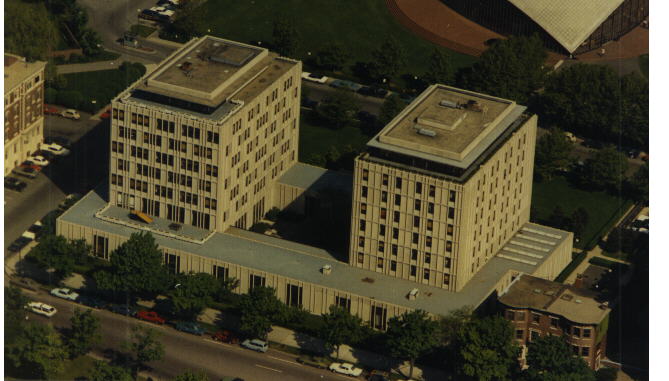
McCormick Hall is named after Stanley A. McCormick, the husband of Katherine Dexter McCormick '04, who was the benefactor of the building. Prior to the construction of McCormick Hall, MIT had accommodated undergraduate women in an ad hoc fashion and through a series of short-term measures. McCormick Hall's construction helped solidify MIT's commitment to the equal education of women, ushering in an era in which the number of women students steadily grew.
Katharine Dexter McCormick, who is most responsible for the construction of the building, was also a central figure in many of the most important social and political struggles facing American women in the twentieth century. She took prominent roles in the women's suffrage movement, government reform movements, and efforts to develop safe birth control methods. She believed in using her fortune only to aid unpopular causes which, in addition to controversial political movements, included the visual arts and music. McCormick Hall stands as a monument to her belief that it is possible to combine graciousness and style with intellectual seriousness and persistent hard work. Please visit the companion web page on this site for more about this remarkable woman.
McCormick Hall was designed by Herbert Beckwith, a member of MIT's architecture faculty and a principal of the firm Anderson Beckwith & Haible. It was constructed in two phases. The first saw the completion of a residential tower, now called the West Tower, in 1963, along with a dining hall, two date rooms, a private dining room, an ornate living room, and a spacious penthouse. In 1967 the East Tower was completed, adding another residential tower and additional amenities on the first floor and penthouse. The neighboring two-family brownstone, which had formerly housed the religious counselors, was converted to residential use and connected to the main McCormick building in 1994. This smaller building (W2) is now referred to as the McCormick Annex.
Other buildings at MIT designed by Herbert Beckwith, in addition to McCormick, include the Alumni Swimming Pool (1938-39, MIT's first International Style building), Rockwell Cage (1947), the Radiation Lab, the Van de Graaf Generator building (1948, now demolished), the Dorrance Food Laboratory (1950, the first building at MIT to use glass curtain-wall construction), the Whittaker Life Sciences Building (1963), and the Pierce Boathouse (1965). Other area buildings include the Science Building at UMass Boston, the Brookline Town Office Building and Raytheon's Executive Office Building in Lexington.
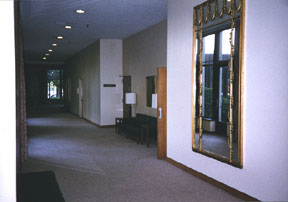 McCormick Hall is noted for the graciousness of its common spaces.
First floor facilities now include two large living rooms, 4
"date rooms," a dance studio, the dining hall, and the
private dining room. Study facilities are available in three seminar
rooms and in study carrels in the West Tower Penthouse. Both the East
Tower and West Tower Penthouses offer places for students to
socialize, watch television, or catch a spectacular view of the
Charles River basin and Boston across the river. The East Tower is
also home to an exercise room, dark room, sewing room, music room, and
"kitchen in the clouds."
McCormick Hall is noted for the graciousness of its common spaces.
First floor facilities now include two large living rooms, 4
"date rooms," a dance studio, the dining hall, and the
private dining room. Study facilities are available in three seminar
rooms and in study carrels in the West Tower Penthouse. Both the East
Tower and West Tower Penthouses offer places for students to
socialize, watch television, or catch a spectacular view of the
Charles River basin and Boston across the river. The East Tower is
also home to an exercise room, dark room, sewing room, music room, and
"kitchen in the clouds."Although McCormick accomodates all four years of MIT undergraduate women, the East and West Towers have slightly different classes mixes and atmospheres. The residential rooms in the West tower are a mix of singles and doubles. (Many of the doubles serve as crowded triples when the incoming freshmen class is large in size.) The West Tower residential floor plan is like most traditional dormitory hallways, built in a ring, with communal bathrooms and a kitchen. In the West Tower, freshmen live either in doubles or crowded triples; juniors, seniors and a small number of sophomores live in the singles. The East Tower consists entirely of single rooms, organized around suites, two to a floor. Residents in the East Tower are primarily freshmen, sophomores and a few juniors. Rooms in both towers are spacious, and are also noted for the mahogany furniture integrated into each room's construction. The Annex is a converted 19th century two-family brownstone that houses a mix of singles, doubles, and triples. Approximately 25 undergraduate women live in the smaller-scaled, homier environment of the Annex.
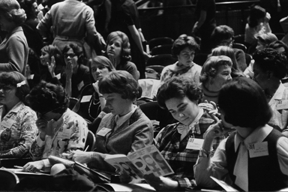 The construction of McCormick Hall came amid a major effort supported
at the highest level of the MIT administration to strengthen and
enhance the role of women in science and engineering, not only at MIT,
but throughout the world. McCormick's construction and dedication
were noted in the local and national press as an indicator of MIT's
seriousness in this undertaking. Coinciding with the opening of
McCormick Hall, MIT hosted a national conference on the role of women
in American science which was organized by many of the residents of
the new dormitory.
The construction of McCormick Hall came amid a major effort supported
at the highest level of the MIT administration to strengthen and
enhance the role of women in science and engineering, not only at MIT,
but throughout the world. McCormick's construction and dedication
were noted in the local and national press as an indicator of MIT's
seriousness in this undertaking. Coinciding with the opening of
McCormick Hall, MIT hosted a national conference on the role of women
in American science which was organized by many of the residents of
the new dormitory.At its founding, MIT followed the tradition of most European universities in providing no housing to its students. Thus, a strong tradition of fraternities and rooming houses grew up around the Institute in its earliest days.
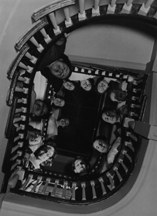 When Katharine Dexter McCormick attended MIT around the turn of the
twentieth century, she lived at home and commuted to classes each day.
Once MIT made the move from Boston to Cambridge and began to develop
in the Anglo-American residential mode, the issue of where to house
the small population of undergraduate women became more pressing.
There was even talk at MIT of turning the Institute into an all-men's
institution, so that the potentially-costly issue of where to house
women undergraduates could be avoided. In the 1950s Mrs. McCormick
and of Mrs. Karl Compton, the wife of MIT's president, led to the
establishment of MIT's first dormitory for its women students, at 120
Bay State Road in Boston. One well-beloved feature of this residence
was Mrs. McCormick's endowment of a small "taxi fund," which paid for
trips across the river to class on rainy days for residents of the
building.
When Katharine Dexter McCormick attended MIT around the turn of the
twentieth century, she lived at home and commuted to classes each day.
Once MIT made the move from Boston to Cambridge and began to develop
in the Anglo-American residential mode, the issue of where to house
the small population of undergraduate women became more pressing.
There was even talk at MIT of turning the Institute into an all-men's
institution, so that the potentially-costly issue of where to house
women undergraduates could be avoided. In the 1950s Mrs. McCormick
and of Mrs. Karl Compton, the wife of MIT's president, led to the
establishment of MIT's first dormitory for its women students, at 120
Bay State Road in Boston. One well-beloved feature of this residence
was Mrs. McCormick's endowment of a small "taxi fund," which paid for
trips across the river to class on rainy days for residents of the
building.
Past residents of McCormick Hall
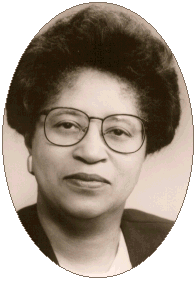 Shirley Ann Jackson, noted physicist and former Commissioner of the
Nuclear Regulatory Commission, was one of McCormick's first residents
(and chair of its Judicial Committee). More about noted McCormick
alums will follow.
Shirley Ann Jackson, noted physicist and former Commissioner of the
Nuclear Regulatory Commission, was one of McCormick's first residents
(and chair of its Judicial Committee). More about noted McCormick
alums will follow.
| School year | Presidents | Housemasters | House Managers |
| 1963-64 | Sue Colodny | Prof. & Mrs. Lynwood S. Bryant | Frances Rainey Luttman-Johnson |
| 1964-65 | Janet Romanowyck | Prof. & Mrs. Lynwood S. Bryant | Frances Rainey Luttman-Johnson |
| 1965-66 | Diane Macunovich | Prof. & Mrs. Lynwood S. Bryant | Frances Rainey Luttman-Johnson |
| 1966-67 | Judi Sahagen | Prof. & Mrs. Lynwood S. Bryant | Frances Rainey Luttman-Johnson |
| 1967-68 | Dinah Schiffer | Prof. Klaus Biemann (V) & Vera Biemann | Frances Rainey Luttman-Johnson |
| 1968-69 | Elaine Lancaster | Prof. Klaus Biemann (V) & Vera Biemann | Frances Rainey Luttman-Johnson |
| 1969-70 | Joan Etzweiler | Prof. Klaus Biemann (V) & Vera Biemann | Frances Rainey Luttman-Johnson |
| 1970-71 | Elaine Savage | Prof. Klaus Biemann (V) & Vera Biemann | Frances Rainey Luttman-Johnson |
| 1971-72 | Marcia Keyes | Prof. Klaus Biemann (V) & Vera Biemann | Frances Rainey Luttman-Johnson |
| 1972-73 | Janet Markham | Prof. Stephen D. Senturia (VI) & Alice Senturia | Frances Rainey Luttman-Johnson |
| 1973-74 | Barbie Miglierian | Prof. Stephen D. Senturia (VI) & Alice Senturia | Norma Mele |
| 1974-75 | Caryl Marceau | Prof. Stephen D. Senturia (VI) & Alice Senturia | Norma Mele |
| 1975-76 | Anita Horton | Prof. Stephen D. Senturia (VI) & Alice Senturia | Norma Mele |
| 1976-77 | Mary-Jo Engelke | Prof. Stephen D. Senturia (VI) & Alice Senturia | Norma Mele |
| 1977-78 | Barbara Ostrov | Prof. Stephen D. Senturia (VI) & Alice Senturia | Norma Mele |
| 1978-79 | Anitta Bliss | Prof. Margery Resnick (XXI) & Steve Ault | Norma Mele |
| 1979-80 | Jean-Marie Hand | Prof. Margery Resnick (XXI) & Steve Ault | Norma Mele |
| 1980-81 | Sandy Waal | Prof. Margery Resnick (XXI) & Steve Ault | Norma Mele |
| 1981-82 | Ruby Chandy | Prof. Margery Resnick (XXI) & Steve Ault | Norma Mele |
| 1982-83 | Stella Hetelikidis | Prof. Margery Resnick (XXI) & Steve Ault | Norma Mele |
| 1983-84 | Anita Killian | Prof. Margery Resnick (XXI) & Steve Ault | Norma Mele |
| 1984-85 | D'Juana White | Prof. Margery Resnick (XXI) & Steve Ault | Norma Mele |
| 1985-86 | Martha McKinney | Prof. Margery Resnick (XXI) & Steve Ault | Norma Mele |
| 1986-87 | Helena Cragg | Prof. Graham Walker (VII) & Jan Walker | Norma Mele |
| 1987-88 | Nirmala Panicker | Prof. Graham Walker (VII) & Jan Walker | Norma Mele |
| 1988-89 | Valerie Feliberti | Prof. Graham Walker (VII) & Jan Walker | Norma Mele |
| 1989-90 | Anne Law | Prof. Graham Walker (VII) & Jan Walker | Paul Bragger |
| 1990-91 | Julie Gupta | Prof. Graham Walker (VII) & Jan Walker | Paul Bragger |
| 1991-92 | Linda Carazos | Prof. Graham Walker (VII) & Jan Walker | Bailey Hewit |
| 1993 | Sonia Ensenat | Prof. Charles Stewart III (XVII) & Kathryn Hess | Bailey Hewit |
| 1994 | Sonia Ensenat | Prof. Charles Stewart III (XVII) & Kathryn Hess | Bailey Hewit |
| 1995 | Ish Modak | Prof. Charles Stewart III (XVII) & Kathryn Hess | Bailey Hewit |
| 1996 | Marnie Biando | Prof. Charles Stewart III (XVII) & Kathryn Hess | Bailey Hewit |
| 1997 | Angela Kwan | Prof. Charles Stewart III (XVII) & Kathryn Hess | Bailey Hewit |
| 1998 | Fenney Kwan | Prof. Charles Stewart III (XVII) & Kathryn Hess | Bailey Hewit |
| 1999 | May Tse | Prof. Charles Stewart III (XVII) & Kathryn Hess | Bailey Hewit |
| 1999 | Robin Chiu | Prof. Charles Stewart III (XVII) & Kathryn Hess | Bailey Hewit |
| 2000 | Ruchi Srivastava | Prof. Charles Stewart III (XVII) & Kathryn Hess | Bailey Hewit-Morey |
| 2001 | Kelly Chin | Prof. Charles Stewart III (XVII) & Kathryn Hess | Bailey Hewit-Morey |
| 2002 | Lauren Frick and Anita Mhaskar; Marjan Bolouri | Prof. Charles Stewart III (XVII) & Kathryn Hess | Colleen Honohan |
| 2003 | Marjan Bolouri | Prof. Charles Stewart III (XVII) & Kathryn Hess | Colleen Honohan |
| 2004 | Alice Wuu | Prof. Charles Stewart III (XVII) & Kathryn Hess | Colleen Honohan |
| 2005 | Emily Cheng; Stephanie Kim | Prof. Charles Stewart III (XVII) & Kathryn Hess | Colleen Honohan |
| 2006 | Petra Barron | Prof. Charles Stewart III (XVII) & Kathryn Hess | Colleen Honohan |
| 2007 | Rebecca Oman | Prof. Charles Stewart III (XVII) & Kathryn Hess | Colleen Honohan |
| 2008 | Sidra Khan | Prof. Charles Stewart III (XVII) & Kathryn Hess | Colleen Honohan |
| 2009 | Anila Sinha | Prof. Charles Stewart III (XVII) & Kathryn Hess | Colleen Honohan |
| 2010 | Hannah Rice | Prof. Charles Stewart III (XVII) & Kathryn Hess | Colleen Honohan |
last updated 7/31/07
